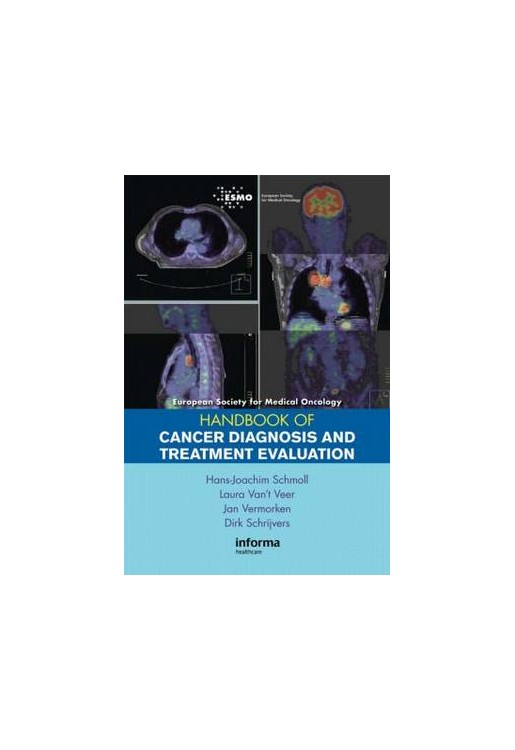An informative handbook on the staging of cancer and the selection and evaluation of cancer treatment. ESMO Handbook on Treatment Evaluation in Cancer is an ideal resource for medical oncologists and those involved in screening and chemotherapy programs.
The text demonstrates how to judge various prognostic and predictive factors, how to determine the relevance of staging, and how to measure patient response for each cancer type.
Written by an international team of experts, this progressive text incorporates the fast-moving world of research into the field of cancer genetics and prevention.
Topics discussed include:
epidemiology
genetics of cancer
sporadic cancers
hereditary cancers
primary prevention of cancer
screening programmes for the general population
screening programmes for those at higher risk
the role of prevention
secondary prevention of cancer
Introduction
Pathology
Introduction
Aims in diagnosis and treatment
Clinical implications and use
Biomarkers in oncology
Introduction
Clinically useful tumor markers
"Omics"
Conclusions
Radiological imaging
Introduction
Plain X rays
Ultrasound
Computed tomography
Magnetic resonance imaging
Newer techniques
Nuclear medicine imaging
Introduction
Positron emission tomography
Staging procedures
Aim of staging procedures
Relevant staging procedures in daily clinical practice
Head and neck tumors
Small cell lung cancer
Non-small cell lung cancer
Esophageal cancer
Gastric cancer
Colorectal cancer
Breast cancer
Prostate cancer
Bladder cancer
Renal cell cancer
Endometrial cancer
Ovarian cancer
Malignant melanoma
Non-Hodgkin's lymphoma
Hodgkin's disease
Prognostic criteria
Introduction
Patient-related prognostic factors
Tumor-related prognostic factors
Conclusion
Predictive tumor markers
Introduction
Tumor markers: definition and types
Tumor markers: evaluation of their clinical utility
Tumor markers: methodological, statistical, and reporting considerations
Predictive tumor markers in routine use or in development
Conclusion
Factors determining anticancer treatment
Introduction
Disease-related factors
Patient-related factors
Treatment-related factors
Sociocultural factors
Conclusion
Treatment evaluation of activity: From global to personalized approach
Introduction
Evaluation of the treatment of solid tumors
Acute and subacute toxicities of medical anticancer treatment
Introduction
Tissue necrosis and phlebitis
Nausea and vomiting
Hypersensitivity reactions
Tumor lysis syndrome
Flu-like syndrome
Hematologic toxicity
Mucositis (stomatitis, diarrhea)
Hair loss
Skin toxicity
Pancreatitis
Liver toxicity
Constipation and ileus
Early-onset pulmonary toxicity
Metabolic complications
Late toxicity
Introduction
Methodological aspects
Second cancer
Cardiovascular disease
Endocrine effects
Other long-term effects
Conclusion
Acute and late effects in radiation oncology and surgery
Introduction
Radiotherapy
Surgery
Psychosocial effects of cancer and treatment
Introduction
Psychosocial consequences
Long-term survivorship
Vulnerable cancer patients
The role of the psychologist in oncology
The role of the oncologist
Psychological screening
Conclusion
Incapacity due to cancer and cancer therapy
Introduction
General weakness and fatigue
Cognitive and emotional impairment
Neuropathy
Gastrointestinal impairment
Bladder disorders
Sexual dysfunction
Conclusion
Reintegration into the workplace
Introduction
Guidelines for integration
Barriers for reintegration into the workplace
Requalification and job applications
Retirement
Conclusion
Quality of life issues
Introduction
HRQOL in clinical trials: design and its impact on clinical results
Using HRQOL measures in daily clinical practice: clinical impact
Conclusion
Conclusion


